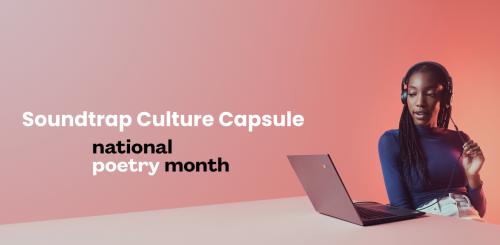
The Beginner’s Guide to Creating a Podcast [2023]
July 14, 2023Venturing into the podcast world can be a transformative endeavor, whether you’re a brand seeking to enhance customer engagement, a business looking to provide value to your clients, or an educator aiming to captivate your students in a unique way. Creating a podcast can amplify your voice, enrich your communication strategies, and create a platform for sharing knowledge or creative expression.
The motivations behind starting a podcast can be as varied as the individuals or entities initiating them. For a brand, it could be about building stronger relationships with their audience or enhancing its marketing strategies. In terms of business, it can be a powerful tool to share industry insights and expertise, thereby positioning themselves as thought leaders. For educators and students, it offers an innovative and engaging approach to learning, sparking creativity and encouraging intellectual exploration.
But before delving into this exciting realm, it’s crucial to understand the basics of creating a podcast. From choosing a relevant and engaging topic that resonates with your target audience to select the right equipment that aligns with your podcasting goals, there are several aspects to consider. This comprehensive guide aims to simplify these aspects, preparing you with all the essential knowledge you need before you hit the record button. So let’s embark on this journey of podcasting together!
Why Should You Start Podcasting?
Can you remember the last time you listened to a podcast? If you’ve listened to one recently, you’re in good company! Over 62% of Americans 12 years and up have listened to a podcast, and about 38% of those listeners tune in every month.
Smartphones, laptops, and other mobile devices have made it easier than ever for listeners of all ages to experience the power of podcasting, whether they’re interested in Education, entertainment, or even creating their own podcasts!
Since more people are listening to content online, there’s an excellent opportunity for up-and-coming podcasters to break into the scene. If you have a product or service you’re interested in promoting, podcasting is an effective way to connect with your audience and boost engagement. And if you’re an educator, you can bring podcasting to your classroom to inspire and educate your students.
What is a Podcast, and Why Does it Matter?
The podcast, a potent blend of traditional talk radio and digital tech, has transformed the way we consume content, reaching millions of dedicated listeners worldwide. Featuring different formats like interview style, monologue, and storytelling, podcasts cater to a multitude of audience preferences. Delving into “What is a podcast, and why does it matter?” can open doors for educators, businesses, and enthusiasts alike.
In essence, a podcast is a versatile, influential tool that offers manifold benefits. It amplifies credibility, connects with a diverse listener base, and provides a unique platform for expressing ideas and opinions. Not only do podcasts entertain, but they also support lifelong learning, presenting a user-friendly format for educators and learners to deep-dive into various topics.
Moreover, podcasts are a cost-effective content strategy, allowing creators to repurpose existing material into a more engaging, accessible format, ensuring its lasting value. From enhancing authority to fostering education, the question isn’t just “What is a podcast?” but also “Why wouldn’t you tap into the power of podcasting?”
Read More: “What is a Podcast, and Why Does it Matter?”
The Rise of Podcasts’ Popularity
Podcasts have surged in popularity over the years, evolving from niche “audio blogging” in the 80s to a widely consumed form of digital content. This shift is largely due to the unique benefits podcasts provide, catering to the preferences and lifestyles of a broad listener base.
Here are five key factors behind podcasts’ popularity:
- Tailored Listening Experience: Podcasts cater to individual interests, allowing for a personalized listening experience.
- Convenience: Offering the flexibility to tune in anytime and anywhere, podcasts fit seamlessly into busy schedules.
- Community Building: Podcasts often revolve around niche interests, creating a sense of community among listeners.
- Educational Content: Serving as an accessible source of knowledge, podcasts promote informal learning and broaden perspectives.
- Interactive Dialogue: Unlike many other forms of media, podcasts engage listeners in an interactive dialogue, creating a unique and appealing listening experience.
The rise in podcast popularity signals a shift in content consumption, with listeners preferring this dynamic, engaging, and convenient medium. As a versatile platform, podcasts have the potential to cater to diverse interests, promote learning, and foster community bonds.
Deep Dive into Podcasts’ Popularity
How to Start a Podcast in 7 Easy Steps
Whether you’re looking to start a podcast as a hobby, to build an audience, promote your business, or embark on a new career path, you can create a platform that is uniquely yours. Podcasting is more than just speaking into a microphone; it’s about capturing your audience’s attention, making an impact, and contributing to the vibrant landscape of digital content.
Here’s a simplified guide on how to start a podcast in seven easy steps:
- Define Your Purpose: Determine the goals and objectives of your podcast. It could be educational, entertaining, promotional, or a mix of these.
- Identify Your Audience: Understand who your listeners are, their interests, and the value they will derive from your podcast.
- Select Your Podcast Style: Choose a format that fits your topic and personality. It could be an interview, narrative, conversational, or solo podcast.
- Invest in Equipment: While starting a podcast doesn’t require high-end gear, a good quality microphone and reliable recording software will go a long way (We discuss this in the next section).
- Record Your Podcast: Create an appropriate environment to record, considering factors like noise levels and acoustics.
- Edit and Brand Your Podcast: Use editing software to polish your audio and create distinctive branding elements, such as a logo and theme music.
- Upload and Promote Your Podcast: Upload your episodes to podcast directories and engage in promotional activities to attract and retain listeners.
Embarking on your podcasting journey may seem overwhelming at first glance, but by following these steps, you’ll be well on your way to creating compelling content and building a community of listeners.
For more detailed instructions, real-life examples, and resources on each of these steps, head over to our comprehensive guide.
Read: “How to Start a Podcast in 7 Easy Steps”
Podcasting 101: Podcast Terms You Need to Know
Before you begin your podcasting journey, you’ll need to learn some of the most important podcast terms to easily communicate with collaborators. By learning these terms, you can streamline the editing process later on.
To help you get started, we’ve made it easy for you by putting the most important vocabulary all in one place. Let’s create, collaborate, and connect together through the power of podcasting.
Let’s get started with these simple podcast terms:
- Bit Depth will determine the overall quality of your podcast. You’ll have the option to choose from a bit depth of 16, 24, and 32, but most podcasters record at 16-bit depth.
- Compression helps you balance the loudest and softest sounds within your podcast for a smooth, even sound.
- Digital Audio Workstation (DAW) is the podcast recording software you’ll use to create and edit your podcast.
- Equalization (EQ) is a process that allows you to balance sound frequencies in your podcast for a high-quality end result.
- WAV File is your podcast recording in its original format before you upload it to a streaming service.
Although these 5 terms give you an excellent place to start, there are still 12 other terms you’ll need to know to become a true aficionado
Read the 12 Other Terms You Need to Know to Podcast like a Pro
The Podcast Equipment You Need to Get Started
When taking the leap into podcasting, knowing what equipment you need to get started is crucial. Initially, the options can feel overwhelming with an abundance of tools and tech available. While eight key pieces of equipment can be beneficial for podcasting, we will simplify things for you. In this article, we focus on the four fundamental items you absolutely need to start your podcasting journey.
The backbone of your podcast setup is a reliable computer or smartphone. To enable your success, this device will act as your control center for recording, editing, and publishing your podcast episodes. To ensure your software operates efficiently and provides you with the best possible outcome, it’s important to have an up-to-date device. Another essential accessory is a good pair of headphones. They provide an accurate audio monitoring system during the recording and editing phases, helping you detect any sound issues before they compromise your podcast’s quality.
4 Key Pieces of Podcast Equipment
Now, let’s take a look at the four key pieces of equipment that are fundamental to any podcast setup:
- Microphone: The microphone is a crucial piece of your podcast equipment. For beginners, a USB microphone is often the go-to choice for its affordability and ease of use. However, for more advanced audio quality, you might consider upgrading to an XLR microphone over time.
- Audio Interface: An audio interface is a device that converts analog signals (your voice) into digital signals that your computer can process. This piece of equipment is vital if you’re using an XLR microphone or planning to host multiple guests on your podcast.
- Mixer: A mixer may not be necessary for all podcasters, but it becomes highly beneficial if you plan on having several hosts or guests. The mixer allows you to individually control the audio levels of each person individually, ensuring a balanced and professional output.
- Pop Filter: Pop filters are affordable devices that shield your microphone from fast-moving air caused by plosive sounds (like P’s and B’s), which can lead to audio distortion. Adding a pop filter to your setup can substantially enhance your audio quality and make post-production a breeze.
The podcasting equipment you invest in plays a significant role in the overall quality and success of your podcast. As a result, you don’t need to break the bank, but you do need to invest wisely in your podcast equipment. Remember, compelling content can be overshadowed by poor audio quality, potentially affecting your podcast’s growth and popularity.
Read About All 8 Pieces of Podcasting Equipment You Need to Get Started
Create the Ultimate Podcast with Soundtrap for Education
Soundtrap for Education is the ultimate audio production platform for students, teachers, or even aspiring podcasters to create and edit audio recordings. In using the platform, users can easily tap into their artistic side with this intuitive audio platform. Plus, they can use its advanced cloud technology to collaborate with guests or co-hosts at any time or place.
Soundtrap is perfect for creating podcasts in a classroom setting as part of any modern-day curriculum. With Soundtrap for Education, students can flex their creativity and work together to create their own audio programming in a safe, teacher-moderated environment.
For new users, the platform has a robust resource portal and detailed tutorials. If you’re ready to enhance your final product and reach your podcasting goals, our intuitive cloud-based audio production platform will get you there. Just click to get started today with Soundtrap for Education!
 EDU Portal
EDU Portal


